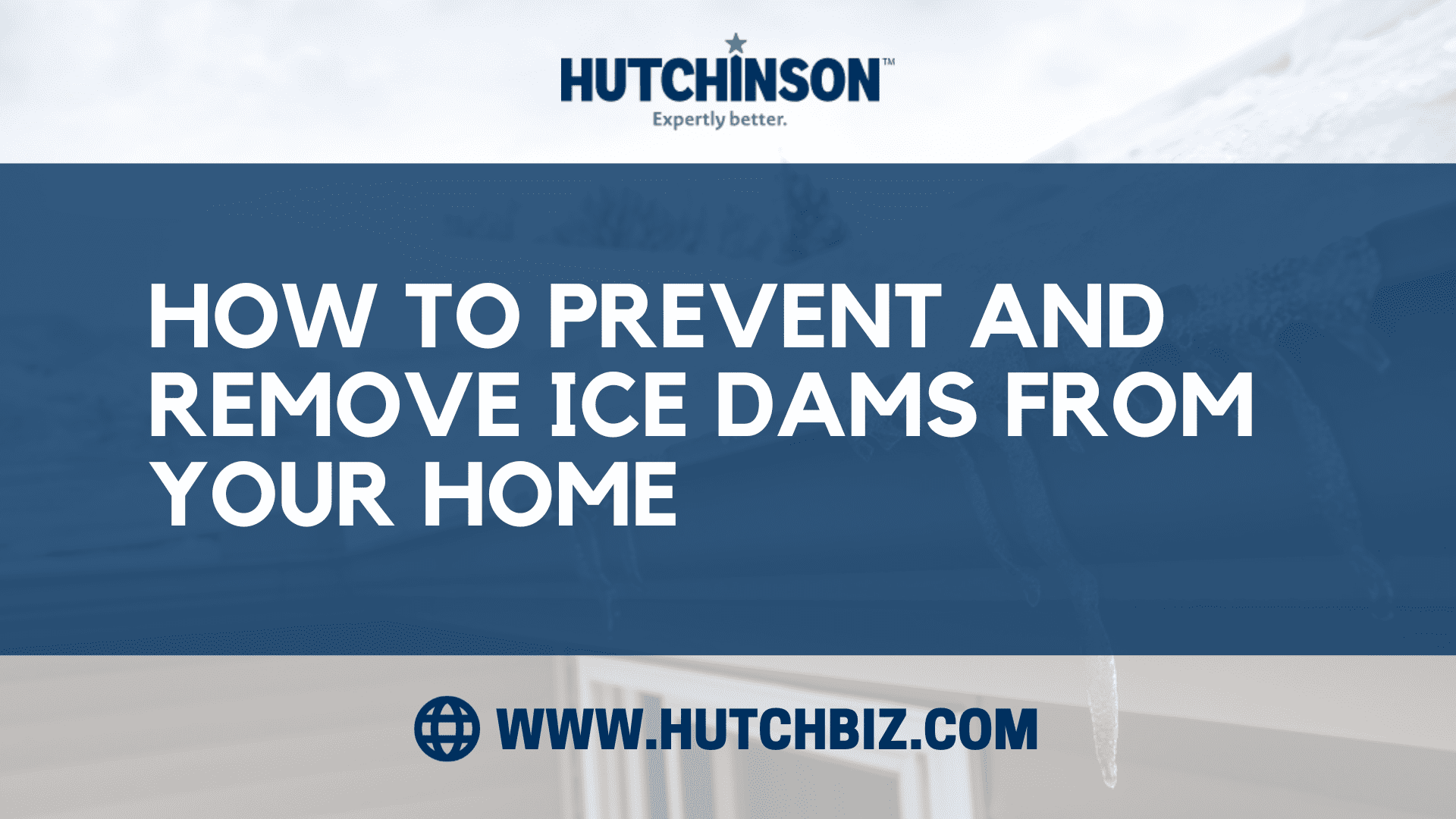
If you live in the Northeast, it’s inevitable that you’ll be dealing with snow and ice at least once a year. With accumulations of snow and ice comes lots of shoveling and scraping, along with what we in the business, and the region, call the “ice dam.” Beautiful to the eye as snow mounds and ice dams may be, they’re not the most welcome of house guests. They can pose serious dangers to the safety and the security of your home. This heavy, trapped ice can loosen or tear off gutters and downspouts, shift roof shingles, stain or compromise sheet rock, and even collapse ceilings.
Here at Hutchinson, we take residential dangers seriously, especially during the coldest months of the year. If you also respect nature, you’ll heed our advice to prevent damage and costly repairs to your property. Here are a few steps to prevent and remove ice dams and melting ice from your roof to avoid disastrous damage to your home.
What Is an Ice Dam?
An ice dam is a frozen slab of water and snow that forms near the edge of roofs, near gutters or soffits, preventing melting snow from draining off. As temperatures rise and fall, this slab thaws and refreezes repeatedly, building up in the most precarious and nefarious ways possible.
Like any other dam, an ice dam stops the flow of water and redirects it along a different route. It is this redirected water that’s infamous for backing up under your house’s shingles—entering the home before you know it. Once inside, this water starts soaking into your insulation, damaging the sheetrock in your walls, and staining everything it passes in the process. Left untouched for too long, this moisture can lead to molds and mildews, along with other dire health concerns.
Preventing Ice Dams
Here are a few tips we’ve compiled from our years out in the field that you can use to prevent ice dams from forming.
- Before the winter even starts, be sure to clean out your gutters.
- Counterintuitive though it maybe, ventilate your attic so that warm air doesn’t heat up the roof of your home.
- Make a concerted effort to insulate your attic floor, preventing heat from rising up through your ceiling to the roof and melting the snow.
- Once snow does fall, rake or shovel as much of it as possible away from your gutters, off of your roof.
- Cold roofs are a great method for preventing ice dams. They match the temperature of the outside air, keeping snow from melting until the weather gets warmer.
- Heating panels prevent ice dams by evenly distributing heat along the length of the installation. The system switches on and off automatically when the temperature rises and falls, making heating panels an easy, one-time fix.
How to Remove an Ice Dam
If you’re already facing a fully-formed ice dam, don’t despair. Instead, here’s what you can do to minimize it:
- Be careful not to damage your shingles, delicately remove snow and ice with a shovel or rake.
- Gather up some warm water and slowly pour it over your ice dam, melting what you can.
- Hire a professional.
In the long run, with our advice in mind, you’ll be more than prepared to face down your first and last ice dam of the winter season. Should you ever face a snowy challenge that you don’t have the time or energy to handle, schedule an appointment with us right away!

